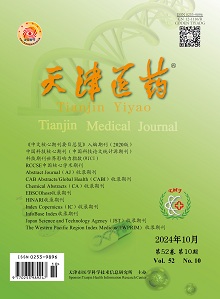Objective To discuss the effect of 3-2-3 abdominal breathing exercises on the occurrence of supine hypotension syndrome (SHS) and fetus in women with caesarean section after subarachnoid block. Methods A total of 131 cesarean section women were selected and randomly divided into three groups: the control group, the deep breathing group and the 3-2-3 abdominal breathing exercise group (3-2-3 group), with 44, 43 and 44 cases in each group. After subarachnoid block, the postpartum women were lied flat and received the following treatment: the control group received no intervention, the deep breathing group only instructed deep breathing and abdominal distension and in the 3-2-3 group inhalation counted 1, 2 and 3 with abdominal bulge to the highest, holding counts 1, 2 and with exhalation counted 1, 2 and 3 until the abdomen reaches the lowest. Changes of heart rates (HR) before anesthesia (T0), supine position for 5 minutes after anesthesia (T1), immediately before surgery (T2), before fetal removal (T3), after fetal removal (T4), as well as systolic blood pressure (SBP), mean arterial pressure (MAP) at T0 and T1 were recorded in the three groups. The occurrence of adverse reactions, the use rate of vasopressors, incidence of SHS, duration of respiratory persistence and Apgar scores of 1-minute and 5-minute in newborns were compared between the three groups. Umbilical artery blood was collected, and interleukin (IL)-1,IL-6 and tumor necrosis factor alpha (TNF-α), cortisol (Cor), norepinephrine (NE), pH value, lactate (Lac) and buffuer excess (BE) were detected. Results (1) Compared to the control group,the HR at T1 to T4 showed significant changes in the deep breathing group (P<0.05), while the HR at T1 to T4 of the 3-2-3 group showed less fluctuation compared to the control group (P<0.05). SBP and MAP of the control group and the deep breathing group significantly decreased at T1 (P<0.05), but there was no significant change in MAP in the 3-2-3 group (P>0.05). (2) Compared with the control group, the incidence of adverse reactions and SHS, as well as the use of vasopressors decreased obviously in the 3-2-3 group (P<0.05), and Apgar score of newborns increased (P<0.05). The respiratory persistence duration was longer in the 3-2-3 group than that in the deep breathing group and the control group (P<0.05). (3) Compared to the control group, there were significant improvements in IL-1, IL-6, TNF-α, Cor, NE, pH, Lac and BE in the 3-2-3 group (all P<0.05). Compared to the deep breathing group, there were significant differences in IL-6, TNF-α, pH value, Lac and BE in the 3-2-3 groups (P<0.05). Conclusion The 3-2-3 abdominal breathing exercises can reduce the incidence of SHS, inhibit fetal stress response and acidosis, and is superior to abdominal deep breathing method in women with cesarean section after subarachnoid block.

